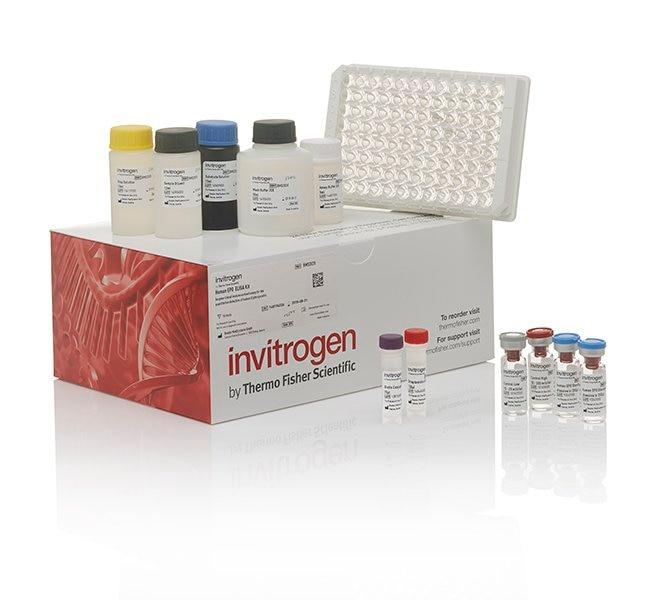Search Thermo Fisher Scientific
Product Specifications
Analytical sensitivity
Assay range
Sample type/volume
Hands-on time
Time-to-result
Homogenous (no wash)
Interassay CV
Intraassay CV
Instrument
Product size
Contents
Standard
Assay Diluent concentrate
HRP-Conjugated Detection Antibody
Wash Buffer
Chromogen
Stop Solution
Adhesive Plate Covers
Shipping conditions
Storage
Protein name
Species (tested)
Assay kit format
Detector antibody conjugate
Label or dye
About This Kit
The DNA Damage ELISA quantitates PGFM in serum, plasma, saliva, urine, digested DNA, fecal extracts, or cell culture medium.
Principle of the method
The DNA Damage Competitive ELISA research-use-only kit detects all three oxidized guanine species; 8-hydroxy-2’- deoxyguanosine from DNA, 8-hydroxyguanosine from RNA, and 8-hydroxyguanine from digested DNA from DNA or RNA. These species may be present in serum, plasma, saliva, urine, dried fecal samples, and tissue culture media samples. An 8-hydroxy-2’-deoxyguanosine (8-OHdG) stock solution is provided to generate a standard curve for the assay and all samples should be read off the standard curve. Standards or diluted samples are pipetted into a clear microtiter plate coated with an antibody to capture rabbit antibodies. An 8-hydroxyguanosine conjugate is added to the standards and samples in the wells. The binding reaction is initiated by the addition of a peroxidase-labeled mouse monoclonal antibody to 8-hydroxy-2’-deoxyguanosine to each well. After a 1-hour incubation the plate is washed and substrate added. The substrate reacts with the peroxidase labeled antibody that has reacted with the bound conjugate. After a short incubation, the reaction is stopped and the intensity of the generated color is detected in a microtiter plate reader capable of measuring at 450 nm.
Rigorous validation
Each manufactured lot of this ELISA kit is quality tested for criteria such as sensitivity, specificity, precision, and lot-to-lot consistency. See manual for more information on validation.
Free radicals and other reactive species are constantly generated in vivo and cause oxidative damage to biomolecules, a process held in check only by the existence of multiple antioxidant and repair systems as well as the replacement of damaged nucleic acids, proteins, and lipids. Intracellular free radical species (ROS) are produced as a result of normal metabolism and extracellular forms are produced as a result of ultraviolet radiation or ionizing radiation. Cellular function may be interrupted or stopped if DNA damage corrupts the integrity of essential information contained in the genome. When individual bases are damaged, nonspecific DNA repair enzymes excise DNA lesions to release deoxynucleotides, and base specific repair glycosylases excise the corresponding base. Deoxynucleotides are enzymatically hydrolyzed to stable deoxynucleosides, and these repair products are transported through the blood and excreted in the urine. Damage to RNA is reflected in nucleoside adducts. Among numerous types of oxidative DNA damage, the formation of 8-hydroxy-2’-deoxyguanosine (8-OHdG) is a ubiquitous marker of oxidative stress. 8-OHdG is physiologically formed and enhanced by chemical carcinogens. During the repair of damaged DNA in vivo by exonucleases, the resulting 8-OHdG is excreted without further metabolism into urine. 8-Hydroxy-2’-deoxyguanosine (8-OHdG) is identical across all species.
For Research Use Only. Not for use in diagnostic procedures. Not for resale without express authorization.
References (0)

Performance Guarantee
If an Invitrogen™ antibody doesn't perform as described on our website or datasheet,we'll replace the product at no cost to you, or provide you with a credit for a future purchase.*
Learn more
We're here to help
Get expert recommendations for common problems or connect directly with an on staff expert for technical assistance related to applications, equipment and general product use.
Contact tech support

